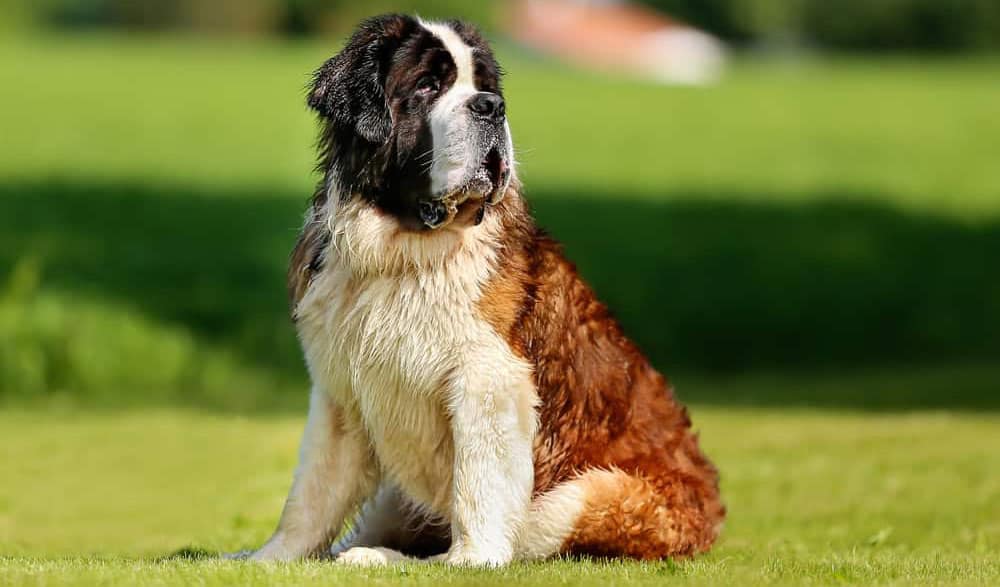The Saint Bernard dog breed originated in the western Alps of Switzerland and Italy. Its first use was as a rescue dog for the hospice of Great St Bernard Pass on the Swiss-Italian border. However, their work as hunting dogs has since expanded to other disciplines. Here’s some information on Saint Bernard. Read on to learn more about this beautiful dog’s health and grooming needs. Also, find out about its breed history of rescue dogs.


Saint Bernard Breeding history
The Saint Bernard Dog was originally developed in Switzerland, and the English have been importing them ever since. However, in the early 1800s, their breeding practices were not as rigorous as the Swiss monk’s. As a result, the English breed became noticeably different from the Swiss Valley dogs and hospice dogs. Eventually, Saint Bernard gained international recognition and began to be bred to be more like the native giants of the Alpine valleys.
The breed’s origins are obscure, but there is evidence that the dog originated from large farm dogs. These dogs were widely used in the region and bred to meet specific ideal criteria. A short history reveals that Saint Bernard was bred to be a companion, working dog, and watchdog. However, the dog’s popularity in the late 1800s led to the outcrossing of the breed to Newfoundland dogs. This outcrossing strategy increased the vigor of the breed. The longhaired subtype was eventually dropped, but not as quickly as the shorthaired type.
Saint Bernard Characteristics
The characteristics of a Saint Bernard dog are similar in both males and females, but some are more pronounced in males. This dog breed is highly social and craves human companionship. Left alone, males may become erratic, reclusive, and destructive. St. Bernards have a gentle temperament, but they need plenty of exercise and mental stimulation. They can be aggressive and destructive if left alone for long periods of time.
Saint Bernard’s unusual head shape makes it easy for them to drool. The dog breed tends to drool more frequently during warm weather and when it is exciting. To limit this behavior, keep your Saint-Bernard cool and prepare food out of sight. St. Bernard puppies are notoriously droolers, and owners should keep plenty of drool rags nearby to wipe up any excess drool.
Saint Bernard’s Health conditions
While the Saint Bernard dog may be a large breed, it is also susceptible to a number of medical conditions. One common health problem is osteosarcoma, a bone tumor found in middle-aged and older giant-breed dogs. This painful disease can result in lameness and leg pain. Early detection of this tumor is important for improving the dog’s prognosis. Although surgery can cure osteosarcoma, it can also be recurrent.
A common St. Bernard health problem is hyperthermia or excessive body heat. Because of the breed’s large size, St. Bernards have an inherited tendency to develop this condition. This causes excessive body heat and can result in severe symptoms including organ damage and even heat stroke. If left untreated, distichiasis can lead to corneal ulcers and chronic eye pain. Treatment for distichiasis includes removing abnormal hairs.
Saint Bernard Grooming needs
While the coat of Saint Bernard is long and shiny, you should still regularly brush it. Brushing your Saint Bernard daily can prevent matting, but you should use a wide-toothed comb to get through it. Brushing should be gentle; you may need to use detangling lotion. St Bernards’s ears can develop stains, so it’s important to check for them to prevent them from being infected.
St. Bernard has a double coat that can be shed several times a year. The long coat will shed more than the short coat, so be prepared for this. During the spring and autumn seasons, you may have to groom your Saint Bernard more than once a week. If you’re grooming your Saint Bernard on a daily basis, you’ll have to brush it daily. The coat will be shed every two to three months, so be prepared to spend some time on it.
Price
The cost of owning a Saint Bernard dog is higher than that of a Shih Tzu or other smaller breed. These large dogs can weigh up to 120 to 180 pounds. Despite their size, they live long and healthy lives. They are one of the few breeds to outlive their owners by over ten years. Here are some things to keep in mind when determining the price of your new friend. Firstly, keep in mind that Saint Bernard is a large dog and requires a lot of care.
Conclusion:
If you’re looking for a cheap Saint Bernard, try to buy it from a national breed rescue organization. These organizations will charge you more money than localized breed rescue groups, but you can find them for much cheaper prices. Secondly, avoid purchasing an expensive dog from a puppy mill. These dogs come with low health insurance and should not be kept in a hot car. It’s also a good idea to consider breed-specific shelters, as these will provide more specialized care.
